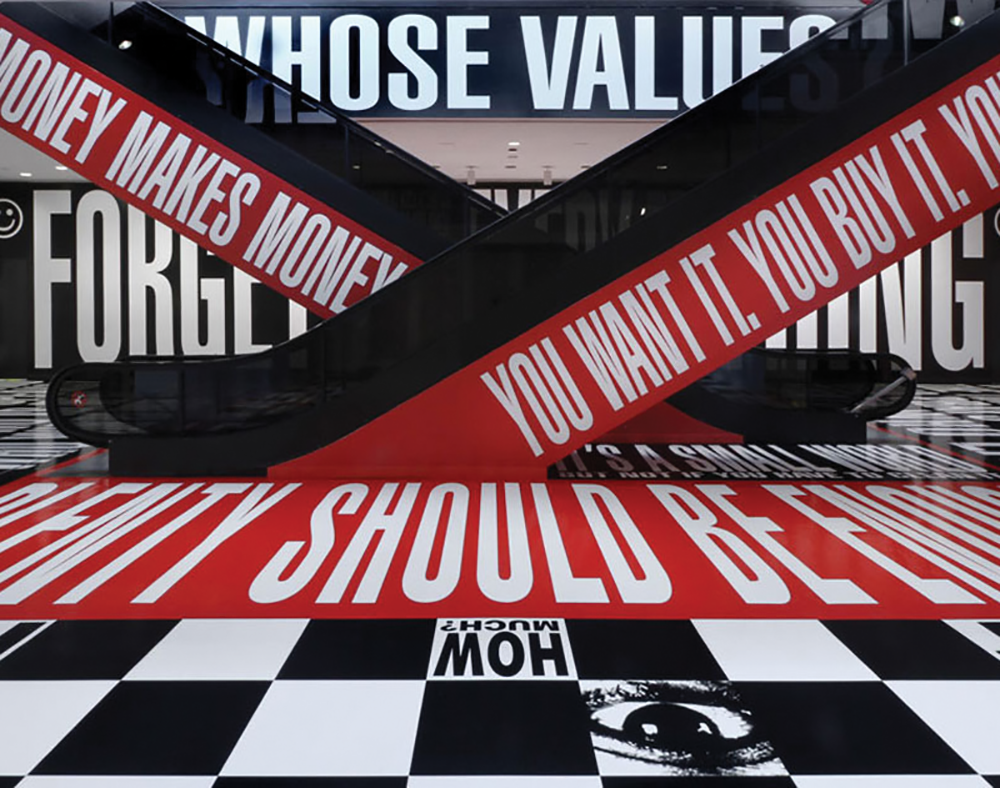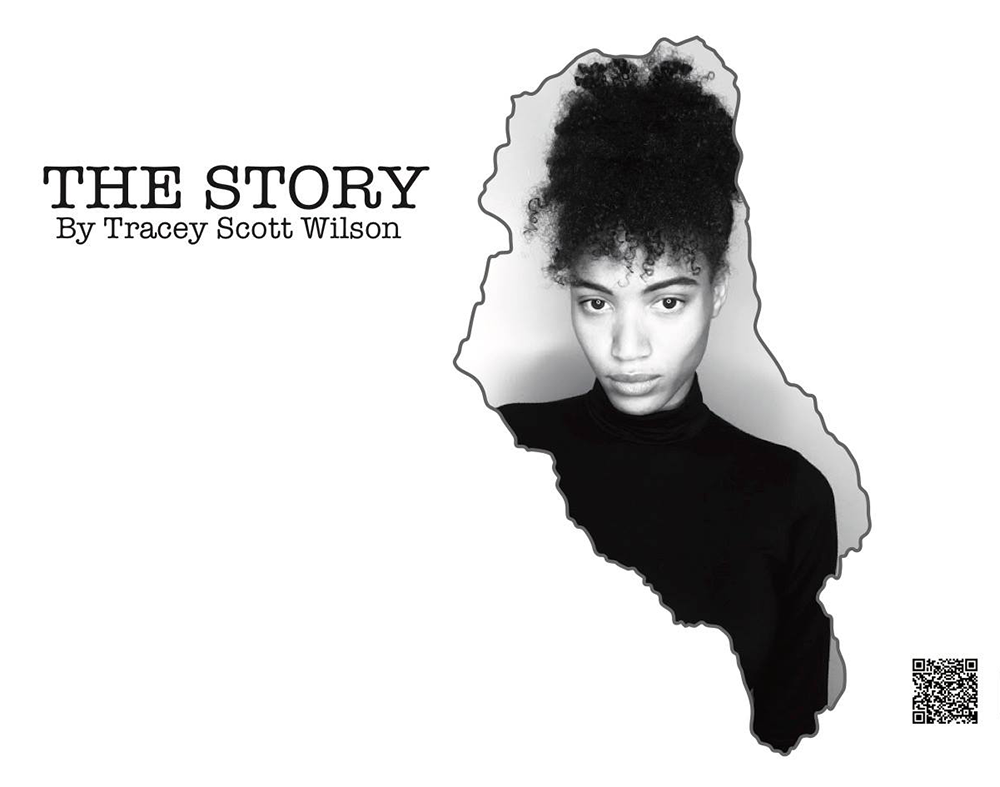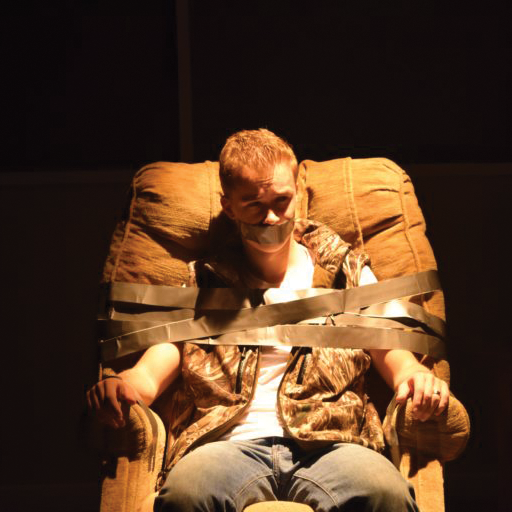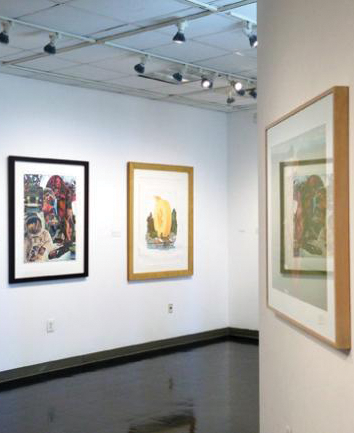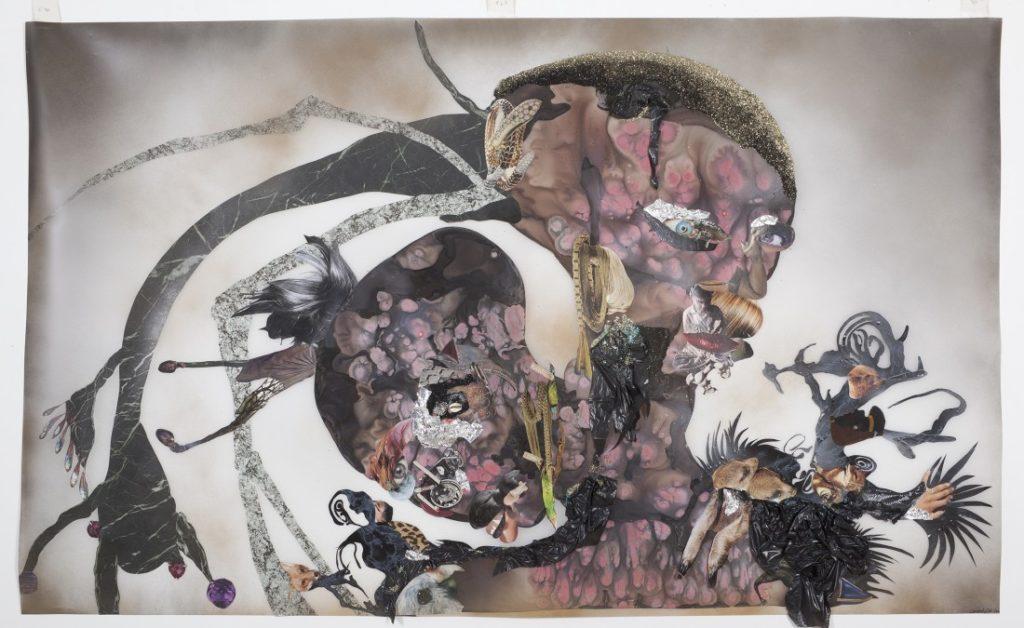Going up the elevator at the Hirshhorn Museum and Sculpture Gallery, one cannot help but notice the vibrant, golden art decor that spreads all along the wall — but there is much more to the artwork than beautiful and symmetric patterns. There are security cameras, steel chains, handcuffs and social media icons incorporated throughout.
Stepping off the escalator and walking into the first room of the gallery, I was challenged by the gaze of a towering man. Ai Weiwei stands in front of me, staring, judging. Using his index fingers and thumbs to widen his eyes and intensify his stare, he gives a clear message through the black and white still: Look. You can see the injustice, the pain and the suffering. Force yourself to watch, to face reality.
Exploring Injustice at the Hirshhorn
Born in Beijing, China in 1957, but then exiled to the Xinjiang province because of the “intellectual threat” his father presented, Ai Weiwei grew up understanding the pains of repression and abuse. After living in New York in the 1980s — where he pursued a career in the arts and enjoyed political freedoms and artistic activism — he returned to China with the intention of creating platforms for artists to speak freely, and to use his work in defense of human rights and against oppression.
“Freedom is a strange thing,” Ai Weiwei once said. “Once you’ve experienced it, it stays in your heart.”
Ai Weiwei’s “Trace” highlights his activism and empowerment of others seeking political freedom and social justice. The exhibit, currently on display at the Hirshhorn, consists of almost 200 portraits of prisoners of conscience, political protestors and freedom activists, all of whom have been cruelly punished, publically shamed and accused of crimes and treason.
The message of the exhibit is clear, outlining the same difficulties that Ai Weiwei has faced. As an open challenger to the policies of the Chinese Communist Party, Ai Weiwei has been assaulted, threatened and put under house arrest. Yet he has not stopped his efforts. And he is not alone.
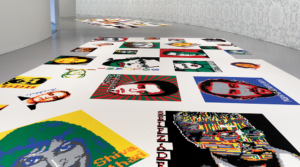
D.C. has enjoyed an explosion of artistic political expression over the last few years. Ai Weiwei might be one of the most prominent ones, but he is not the only player in the city. He is not even the only one in the Hirshhorn, a museum known for its love of modern, expressive and usually politically charged art.
The Hirshhorn, with its penchant for supporting creative and progressive exhibits and statements, also hosts “Belief + Doubt” a full-room installation by Barbara Kruger.
Additionally, on Nov. 8, it opened “Pickett’s Charge,” a groundbreaking work by contemporary artist Mark Bradford.
Kruger’s work consists of a series of questions written in sans serif white characters, spread across walls, floors and the sides of an escalator. The power lies in the simplicity of this work, and the depth of the matter that it covers. Kruger poses inquiries about justice, value and purpose.
Kruger questions what matters to humans and how we live. Questions like “Who is beyond the law?” “Who is free to choose?” and “Who speaks?” point to injustices and inequalities in our societies, and explore the dynamics of power and authority around us. Paired questions like “Who does the crime? Who does the time?” not only complement each other in rhyme and flow, but make easier connections between dynamics of power and subjugation, control and oppression.
Bradford uses a similar technique in trying to develop political statements through his art. Known for his incorporation of abstract artistic techniques into the political scene, Bradford uses his work to explore socio-political issues, and grapples with historical perspectives to meditate on current events.
Bradford’s most recent work is inspired by Paul Philippoteaux’s 19th-century “Gettysburg Cyclorama,” which depicts Pickett’s Charge, the last stand by the Confederacy at this bloody battle. Bradford takes the original piece [physically and conceptually] and transforms it, cutting through fabric, rearranging pieces and adding his own trends and lines. The result is a series of circular walls that show movement, passion, tear and wear. You see the fabric of American society move and wave around, and you can follow the path that Bradford has been going through. He looks back at one of the most violent times in American history and connects it to our present.
Resistance and Change
Moving beyond the Hirshhorn, we can see other artists and movements, making statements and putting together works to reflect our realities and to protest issues of our time.
The International Art & Artists gallery at the Hillyer Art Space put out a call for submissions to their exhibition “Create/Change,” which was on display until last month. The call for submissions to this exhibition focused on individuals’ roles as “artist-citizens,” having them speak of what they see as civilians and express their concern with everyday life.
Works by 17 artists from 17 different cities were shown, and they express different views and challenges that people from around the country face. There are pieces that seem to explore everyday life in America, with subtle mention of contentious issues. A black-and-white video depicting a woman engaging in traditional Muslim prayer rituals along a local street seems to highlight a consistent clash between secular and religious life. There are much stronger political statements, such as those addressing violence against black Americans. All in all, it is a collaborative work that highlights the daily lives and struggles of Americans.
“Resist,” originally at Zenith Gallery and now displayed at restaurant and lounge Busboys and Poets, calls for artists to depict movements of discontent and protest, many of which focused on the Women’s March that was hosted in Washington, D.C., on Jan. 21. This gallery features all types of artwork, speaking against issues of nuclear proliferation, climate change, religious intolerance and sexism.
“Resist” is just one example of the clear examination of the activism that has grown around the city and influenced the D.C. arts scene. A city that has tried to remain silent and objective in matters of political division is awaking, and its art is showing this.


